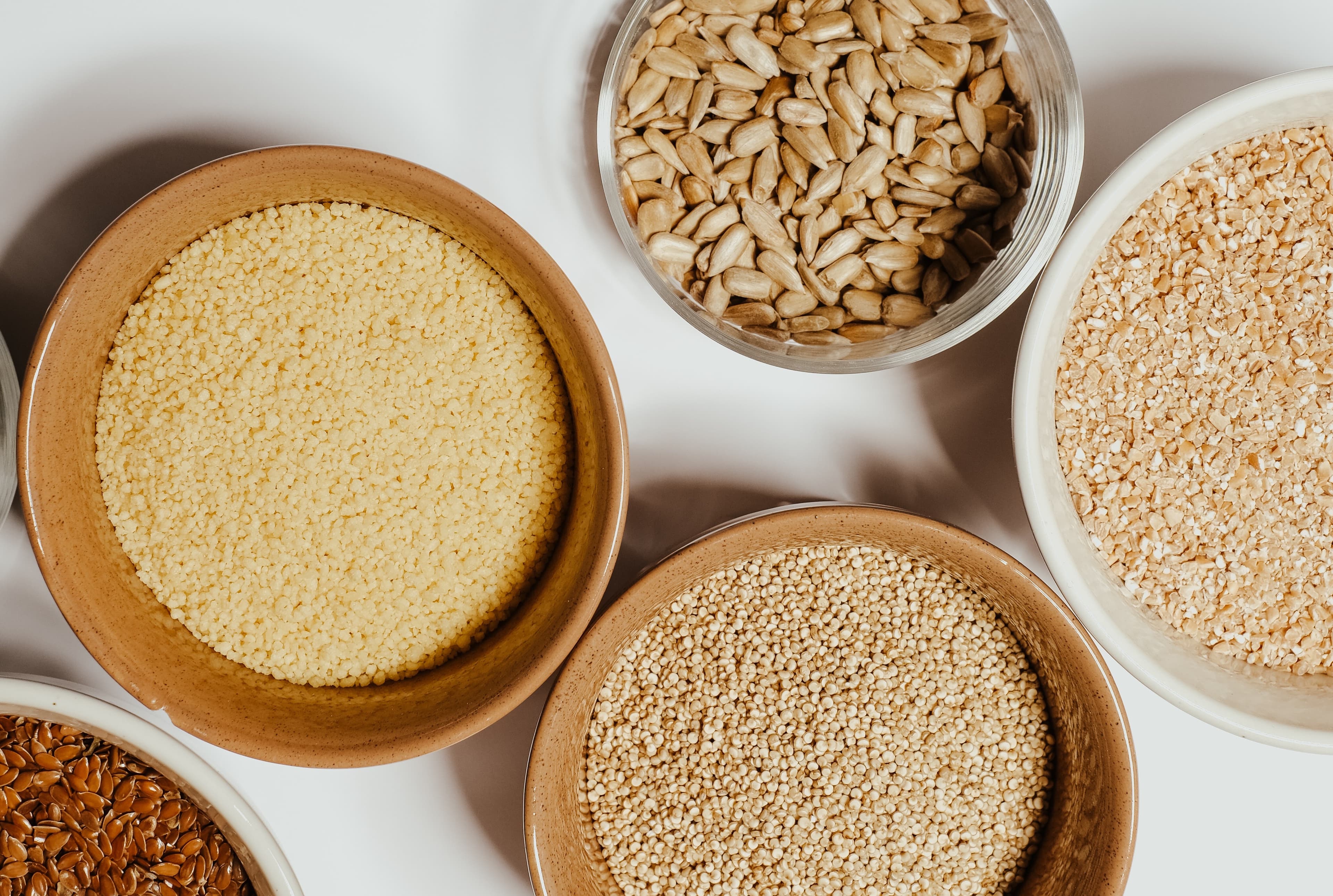Salt is one of the most popular seasonings and for good reason. Just a little bit adds a punch of flavor, making even the blandest dishes delicious.
Salt is found in most foods, but over-salting can have negative effects on your health. That’s particularly true for those with certain health problems, like high blood pressure (hypertension), kidney disease, and heart disease.
Cutting back on salt can be hard, but it isn’t impossible. With a little bit of know-how, you can reduce salt without sacrificing taste.
What You’ll Need:
To reduce your salt intake, you need to evaluate your pantry and spice rack. We get into the nitty gritty below, but as a general rule, it’s a good idea to stock up on herbs, spices, aromatic ingredients, and flavored vinegar.
Steps to Reducing Your Salt Intake
Step 1: Familiarize Yourself with Recommended Dietary Guidelines
Most prepackaged foods and preprepared meals have more extra salt than the recommended daily allowance of 2,300 milligrams. Though 2,300 mg might sound like a lot, it’s about equal to one teaspoon!
Recommendations vary depending on your health and the medications you take, so it’s a good idea to ask your doctor for personalized advice.
Step 2: Replace Salt with Herbs and Spices
Table salt, kosher salt, and other types of salt are commonly used to season food, but it’s only one of dozens of spices.
Phyllis Robinson, MSN, RN, a cardiac registered nurse who counsels patients on low-salt diets, says it’s possible to cut back on the amount of salt and still enjoy delicious meals.
Some of the herbs and spices that Robinson recommends include:
Garlic powder
Rosemary
Thyme
Pepper
Vinegar
Paprika
If you aren’t comfortable mixing flavors on your own, try a salt-free seasoning blend like Mrs. Dash. “These mixtures add depth and taste to your dishes without relying on salt,” Robinson said.
Step 3: Squeeze in Citrus
Citrus fruits, like oranges, lemons, and limes, have both sweet and sour qualities. A squeeze of lemon juice or other citrus juice on a chicken breast or salmon filet can enhance the flavor without adding salt.
Want to add even more of a punch? Add grated citrus rind to sweet or savory dishes. The tanginess cuts through fatty and greasy foods, providing a fresher and more balanced taste.
Step 4: Experiment with Aromatic Ingredients
Aromatic ingredients, or aromatics, are a group of veggies that provide the flavor base for many foods, including soups, stews, one-pot meals, and casseroles.
“Aromatic ingredients can enhance the taste of your dishes without relying heavily on salt,” Nurse Robinson said.
Try adding the following aromatics to your meals:
Onions
Garlic
Ginger
Shallots
Scallions
Celery
Leeks
Peppers
Pro Tip: Cook these ingredients with olive oil or margarine. Cooking them slowly in healthy fat causes the vegetables to soften and release more of their flavor.
Step 5: Explore Vinegar
White vinegar has a strong and somewhat unpleasant smell, but it’s not the only vinegar out there.
“Balsalmic vinegar, apple cider vinegar, and flavored vinegar can add acidity and complexity to your meals,” says Nurse Robinson. Plus, the tanginess of vinegar brings other flavors to the forefront, helping enhance subtler spices.
Step 6: Use Fresh Ingredients
One of the easiest ways to cut back on salty food is to make your meals and snacks at home. This can be hard if you’re a full-time family caregiver, but it’s absolutely worth the investment.
“Incorporate fresh fruits, vegetables, and lean proteins into your meals,” Nurse Robinson said. “They naturally contain lower amounts of sodium compared to processed foods.”
Unsure which fruits and vegetables are best? Shop for those with inherent flavors, such as berries, melons, citrus, stone fruit, fennel, spinach, peppers, and mushrooms. Don’t be afraid to try different things. Ask your loved ones for feedback and incorporate their responses into your meal plans.
Step 7: Use Low-Sodium Condiments
Condiments like ketchup, mustard, and soy sauce add lots of flavor, but they’re loaded with salt. If you have a picky eater at home who relies on these items, opt for healthier low-sodium versions instead. The flavor profiles are very similar and present fewer health risks.
How To Reduce Salt in Food - Commonly Asked Questions
1) Is too much salt really bad for my health?
Yes. Regularly eating lots of salt presents a variety of potential health risks.
“Excessive salt intake has immediate and long-term health effects,” said Dr. Tun Min, a general practitioner with more than 10 years of experience at the National Health Service in England.
“Acute high salt levels harm brain cells, causing symptoms like shrinkage, confusion, and muscle spasms. Long-term effects include high blood pressure and increased risk of strokes, heart attacks, and kidney disease.”
2) If I need to lower my salt intake, should I avoid processed foods?
Yes. Dr. Tun Min says that processed foods like bread, lunch meat, chips, pretzels, pickles, and cheese all have high salt content. Though they might not taste too salty due to added ingredients, it’s important to always read the label.
“I recommend checking food labels and choosing "reduced sodium" or "no salt added" options when available. Choose fresh products over processed and avoid manufactured meat like ham and sausages.”
3) Unsalted food tastes bland, will my tastebuds adjust?
If you’ve eaten salt for most of your life, adopting a sodium-free diet can be difficult. Fortunately, your body will adjust.
“Regular high salt consumption creates lasting taste preferences that are hard to change quickly,” Dr. Tun Min said. “But over time your taste buds will adapt. Most people notice an improvement in three or four weeks. Taste buds become more sensitive to salt over time, it just takes patience.”
Takeaways
There’s no doubt that salt makes food taste better, but too much can affect your health. If you or your loved one need to cut back, there are plenty of ways to keep meals flavorful.
Try replacing salt with substitutes like herbs, spices, or salt-free spice mixes. Add citrus, vinegar, or aromatics to your dishes. And, if you need that classic condiment flavor, opt for low-sodium alternatives instead.
If you have feeding or nutrition-related questions, get in touch! Our friendly Care Specialists regularly assist family caregivers with all things meal-related. We’re available and love helping. Call (800) 696-CARE or send an email to support@carewell.com.



